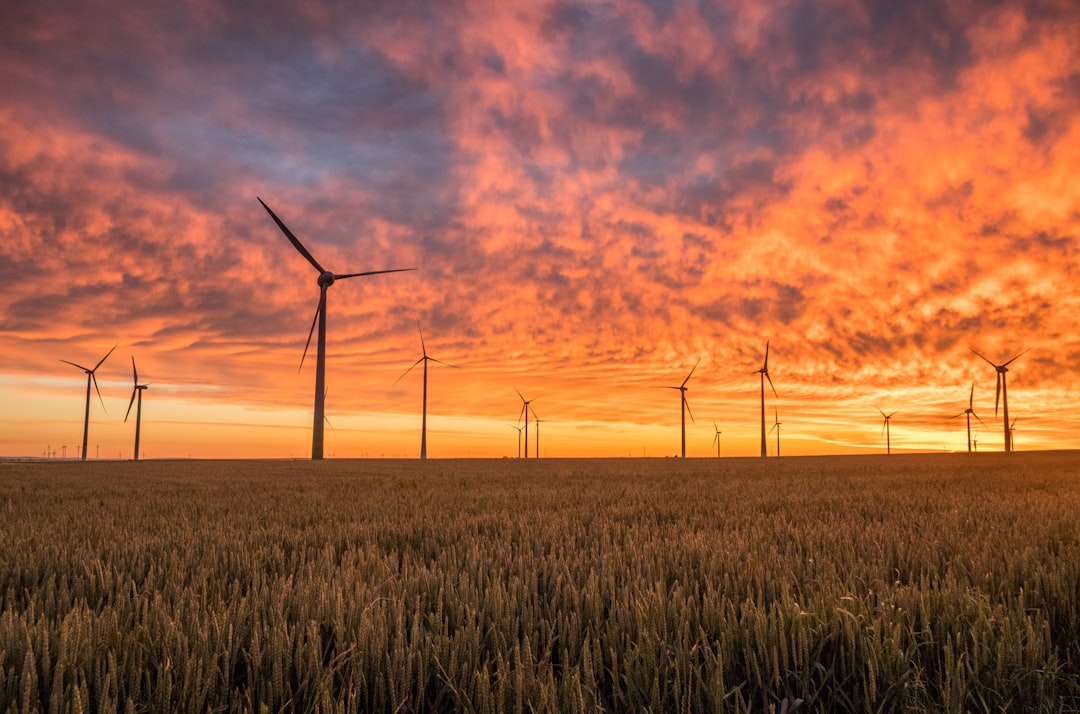One of the many frustrating moments in Thursday’s debate came when Donald Trump was asked what, if anything, he would do about climate change besides his already announced plans to roll back everything Joe Biden has done. Ignoring the question, Trump rambled about how good his presidency was for Black people and fearmongered again about immigration. When the moderator asked if he wanted to use his remaining 38 seconds to say how he would “slow the climate crisis,” Trump said he wanted “clean air and clean water,” which is not the same thing. “We had H2O. We had the best numbers ever.”
Worse, when Biden had the chance to reply and to remind people he’s done more to address the climate crisis than any other president, Biden started well enough, noting he’d signed “the most extensive climate change legislation in history,” meaning his landmark 2022 Inflation Reduction Act (IRA). But instead of going into detail, he took Trump’s bait and defended his record of funding historically Black colleges and universities, then briefly came back to climate, noting that Trump pulled the US out of the Paris climate agreement, even as the world faces the existential crisis of climate change.
Trump lied — as he had when he abandoned it — that the Paris agreement was a “ripoff of the United States” because supposedly no other countries were “paying into it.” In reality, Paris involved countries committing to sharply cut their greenhouse gas emissions by midcentury. It’s not a dues-paying club. Trump was deliberately confusing the entire agreement with one of its components, an agreement that wealthy nations pledge $100 billion a year — in total, together — to help finance climate mitigation and energy transition in the developing world. Or he may have just been lying altogether. In any case, that was pretty much it for any discussion of climate in the debate.
That’s disappointing, especially because, as we noted in the first part of this series, Joe Biden rejoined the Paris agreement on his first day in office, and since then he’s done more on climate than every US president before him combined. Sure, that’s a low bar, given the decades of inaction since climate scientists testified to Congress back in the ‘90s about the risk of global warming, but Biden has gone well past simply doing “something.” His climate policies, taken as a whole, have already set the US on a path to get off fossil fuels by mid-century, although more is needed to reach our Paris commitment of reaching net zero carbon emissions by 2050.
Previously in this series:
For starters, let’s just repost our overview of the biggest parts of Biden’s more than 300 climate actions during his presidency so far, especially as they’re grouped into laws and regulations from executive branch agencies:
-
The American Rescue Plan, Biden’s first big stimulus bill. It had climate stuff too!
-
The Bipartisan Infrastructure Law, which was about roads and bridges but also about clean water, EV charging stations, electric buses for schools and mass transit, and much more.
-
The Inflation Reduction Act (IRA), Biden’s signature climate bill, which the head of the International Energy Agency hailed as the world’s “most important climate action” since 2015’s Paris climate agreement.
-
The CHIPS and Science Act, aimed at bringing the computer chip industry back to the US
-
A huge pile of regulations that will cut carbon emissions across the economy, from vehicle emissions standards, to coal and gas powerplants (goodbye, coal, goodbye!), to a fundamental rethinking of public land use, to regulations that will upgrade the electric grid to handle all the clean energy coming online in the next decade.
Today, we’ll do a quick overview of some of the most significant parts of Biden’s big damn climate law, the Inflation Reduction Act, and in later installments of this series, we’ll go into greater detail. As Biden said last August on the law’s one-year anniversary, the name may have gotten in the way of people recognizing that it’s a climate and jobs law, not primarily an anti-inflation bill. But the larger point is that in its first two years, the IRA has already sparked hundreds of billions of dollars in private sector investment in the clean energy sector and has created 270,000 new jobs, according to a White House estimate.
As for the key goal of reducing greenhouse emissions, climate modelers predict that the IRA all on its own should get the US as much as 42 percent of the way to our target of cutting carbon emissions in half by 2030.
And here’s the thing that’s easy to forget: It’s a ten-year bill, meaning that the economic growth and new job growth the IRA drives will last into the next decade, as will the greenhouse emissions reductions. An analysis from the Energy Futures Initiative and the AFL-CIO projects that over the coming decade, the IRA will create 1.5 million new jobs in the clean energy field.
The IRA is, more than anything, a taxing and spending bill, reflecting the fact that it could only be passed through the “reconciliation” process, which allows bills to avoid a filibuster if they’re primarily about bringing in revenue and spending it.
-
Production credits: Congress can’t pass hard limits on carbon emissions in such a bill, but it can and did offer tax incentives to companies that build low-emissions vehicles, infrastructure, and industrial equipment, which is a BIG part of what the IRA does. The production tax credits in the law have spurred huge investments in EV battery factories, as well as in creating new industrial processes that don’t rely on burning fossil fuels, including stuff that used to be considered difficult to decarbonize, like making cement and even smelting iron and making steel.
-
Consumer credits: On the consumer side, same thing: Congress can’t require everyone to buy an electric vehicle or convert their home heating from gas furnaces to heat pumps — and it wouldn’t want to, given how people would resent that. So instead, the IRA offers generous tax credits to people who buy American-made EVs and who make their homes more energy efficient.
-
Point-of-sale credits: And in a really cool change from how tax credits work, you don’t have to have a tax liability for many of the credits. If you buy a qualifying EV, you get the whole $7,500 credit knocked off the price at the point of sale. (If it’s better for you, though, you can still choose to take the credit when you file your taxes.)
-
“Direct Pay:” In another innovation, the IRA extends its clean energy tax credits to nonprofits and to public schools, entities that have never before been able to make use of tax credits because they don’t pay income taxes. Instead, the IRA will provide “direct pay” to, say, a school that’s replacing its old boiler with a ground-source heat pump, covering as much as half the costs, with enhanced credits for schools in communities with high poverty or that were previously dependent on fossil fuels.
One more cool thing about most of the tax provisions in the IRA: They’re all based on who qualifies for them, instead of limited by a set amount of funds in appropriations, so apart from individual limits (consumers can only get the credit for one EV a year, for instance), most credits will be available for all comers until the end of the IRA in 2032.
And hey, that’s only a start. Next time, we’ll look at other ways the IRA is getting America on track to clean up its climate act.
[Grist / Climate Power / Volts / Volts]
Yr Wonkette is funded entirely by reader donations. If you can, please become a paid subscriber, or if a one-time donation makes more sense for you, then we certainly wouldn’t want you to stop making sense!























































![Social Media Spring Cleaning [Infographic] Social Media Spring Cleaning [Infographic]](https://imgproxy.divecdn.com/9e7sW3TubFHM00yvXe5zvvbhAVriJiGqS8xmVFLPC6s/g:ce/rs:fit:770:435/Z3M6Ly9kaXZlc2l0ZS1zdG9yYWdlL2RpdmVpbWFnZS9zb2NpYWxfc3ByaW5nX2NsZWFuaW5nMi5wbmc=.webp)
![5 Ways to Improve Your LinkedIn Marketing Efforts in 2025 [Infographic] 5 Ways to Improve Your LinkedIn Marketing Efforts in 2025 [Infographic]](https://imgproxy.divecdn.com/Hv-m77iIkXSAtB3IEwA3XAuouMwkZApIeDGDnLy5Yhs/g:ce/rs:fit:770:435/Z3M6Ly9kaXZlc2l0ZS1zdG9yYWdlL2RpdmVpbWFnZS9saW5rZWRpbl9zdHJhdGVneV9pbmZvMi5wbmc=.webp)






















